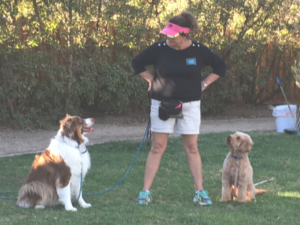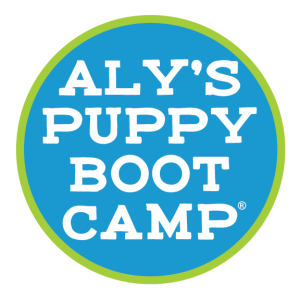As a trainer of both dogs and their humans, I’m always striving to find the right words to express to my fellow humans –methods that can help with the touch, tone and timing aspects of training and learning to ‘read a dog’s’ response to those things.
Professional dog handlers know that what we say and how we say it matters to a dog.

Reading a dog well is learning to accurately discern, by the dog’s reaction, what is really going on in your dog’s brain.
Our dogs give us all kinds of insights and feedback to us by what they do in response to our action.
For example, if you are reaching out to pet your dog, and he squints his eyes, looks away or leans away, STOP touching. He’s letting you know he’s had enough or doesn’t want it right now. Just because you want to tell him he’s a good boy with that pet, in that moment, he’s saying it’s rather offensive to him, and he’d rather not be touched in that way right then.
Here’s another dog-language tip, have you heard someone in their highest, squeaky, baby-talk voice say something like “Are you ready for your walk? READY BABY? READY?” and with each “ready” their voice intensifies while the puppy begins to jump, spin and leak out excited pee!
OR, your dog sits nicely for you and you so enthusiastically and effusively love on him, and tell him what a good boy he is, he jumps up from his sit and right onto you! You get the picture, right! What you say matters. When you say it matters. How you touch matters. Be mindful of that.
I’ve recently had an owner that had a difficult time being able to discern when and how much praise to give her dog (otherwise known as giving positive rewards).
How much is positive praise is enough for your dog? And what are the downsides of giving more than is needed?
This information comes from Charlie Jurney, of North Carolina, he is a professional retriever trainer and owner of Beaverdam Kennels, which has produced multiple Grand Master Hunter Retrievers and Master Hunting Retrievers. You can access his information from many sources; however I found this from a manual: Basic Training, by SportDog Brand with tips from Tom Dokken and Rich Smith.
This manual has a lot of good information in it regarding all aspects of training, however, I’ve selected the sections that pertain to the swallow reflex as a means of learning how to better understand your dog. Read and enjoy…..Aly
____________________________________________________________________________
“The intent of this program is to help you communicate with your dog. This communication is a two-way street. Dogs speak to us in their own language and we must be able to understand what they are saying if training is to be successful. You do not need to be a modern-day Dr. Doolittle; a few simple skills will cover your needs. We could spend a lot of time discussing how dogs communicate, and while that would be helpful, your main focus in listening to your dog will be to understand when your dog accepts what is offered. This acceptance could be for a reward (doing a good job) or correction (making repeated mistakes on a command that has been conditioned).
Your dog will tell you, “I got it boss!” by the simple action of swallowing.
Again, that acceptance behavior is the same for praise and for correction. When you praise your dog (by stroking its shoulder) you will see the dogs swallow response. Your dog has spoken, saying: “I accept your praise.” Continual stroking will not gain you anything. Conversely, it will decrease the effect of future strokes and lessen the sincerity. One of the hardest things you will face is knowing when your dog has received enough correction. Once again, you will understand this when your dog gives you the swallow response. No more correction is needed because the dog has accepted the correction and openly told the world by sticking its tongue out and swallowing. You probably are not sure this is true, so go ahead and stroke your dog on the shoulder and watch for the tongue to come out, followed by a swallow. It’s that simple.”
“Let’s take a second again and discuss how much positive reward to give a dog when it follows your commands. Do you remember how your dog communicates to you that it understands and accepts your actions? When your dog swallows, it says, “I understand.”
So, back off the positive rewards when your dog says it understands and accepts your thank you by swallowing. Continually stroking your dog’s shoulder and praising it will eventually lessen the sincerity of your reward and that could be a huge mistake. “

